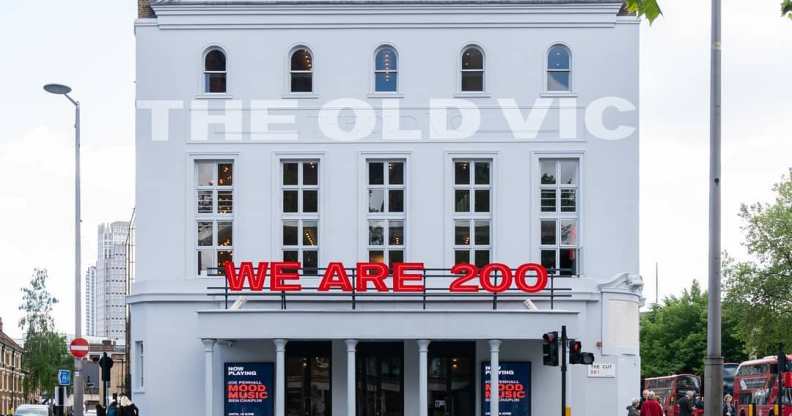Iconic London theatre the Old Vic is introducing inclusive all-gender bathrooms

The Old Vic theatre. (Instagram/OldVicTheatre)
London’s Old Vic theatre has announced that it is introducing all-gender bathrooms as part of a major refurbishment.
It becomes the latest establishment in the UK capital to bring in more inclusive alternatives to single-sex bathrooms.
The theatre will replace male and female bathroom signs with signs indicating whether the bathroom contains urinals or cubicles, in a move that it said will allow “people to make their own decision about which loo is suitable for them”.
The refurbishment includes a doubling in the number of toilet cubicles from 12 to 24, which it hopes will address the industry-wide problem of much longer queues for cubicles compared with shorter queues for urinals.
The Old Vic, which is 201 years old, is also building two new “roomier” toilets for those who are pregnant or have young children with them.
In 2018, the Old Vic announced it would be increasing the number of women’s toilets and was met with calls to introduce all-gender facilities to include members of the trans community.
Speaking about the changes, Kate Varah, executive director at the Old Vic said: “We set out to make changes to The Old Vic that were reflective of the needs of today’s audiences and our local community.”
In 2017, London mayor Sadiq Khan vowed to make gender-neutral toilets available across the city. All-gender or gender-neutral bathrooms help trans and/or non-binary people feel able to use public restrooms.
This year, Wagamama became the latest company to announce it was introducing gender-neutral bathroom facilities into its restaurants. The changes, made in 40 percent of its restaurants, meant that in some cases bathrooms went from being shared spaces to private space – in order to alleviate fears that the changes would “take spaces away from people”.
“In making this move, we don’t want to infringe on others – for example by just rebranding the women’s bathroom as gender-neutral,” said Ross Farquhar, campaigns manager for Wagamama.
“Over the last 26 years, inclusivity has been a bit of a trademark of ours. But we wondered whether we are doing everything we can, to be as inclusive as we can, to every part of the LGBTQ+ community. We decided we could do a bit more,” said Farquhar.
“It’s not something that most of us have to think about, whether there will be a toilet we can go to when we want to use the toilet. We wanted to make that process easier for people.”

